Light Emitting Diode (LED) bulbs are quickly gaining popularity at homes, restaurants, streets, and offices. The bulbs produce light more efficiently compared to incandescent bulbs, and with technology to minimize overheating. But, what about LED lights fire?
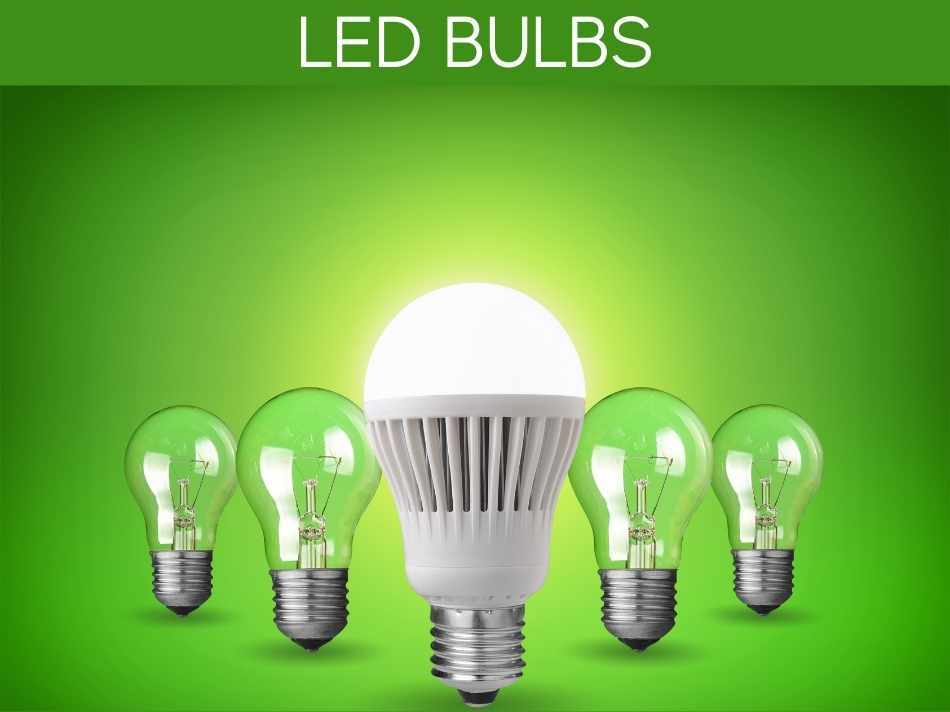
LED lights emit less heat than typical bulbs, typically around 107°F, whereas incandescent bulbs operate at 325°F, & compact fluorescents (CFLs) at 167°F; therefore, LED lights are safer around materials that may be flammable. However, the electrical wires that power these lights can heat up, which may cause a fire hazard.
While overheating is the primary cause of light bulb fires, LED bulbs are designed in a way that they do not reach extreme temperatures. The bulbs have aluminum heat sinks to dissipate the heat emitted. Although always make sure you engage a professional electrician to install the lights.
LED bulb fire: causes & how to prevent them
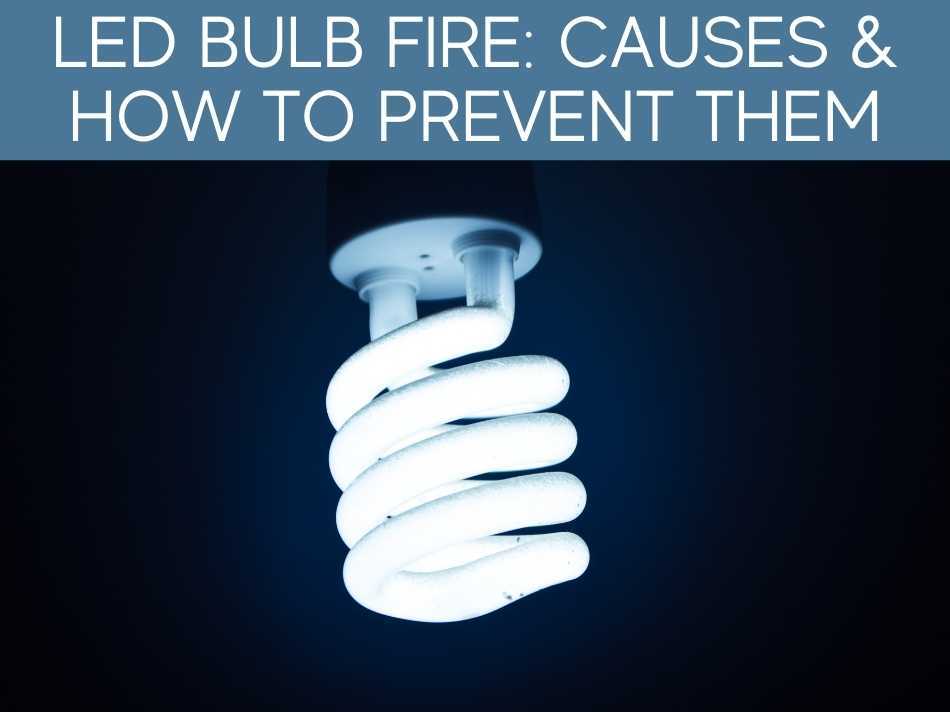
Electrical fires are rampant and are not limited to fires caused by poor installations and bulb fires. For instance, from 2014 to 2016, the US reported about 24,000 residential electrical fires each year.
That said, LED bulbs only heat up to ~105-110 F when left running, even for extended periods. This means that the temperatures are low, and the likelihood of causing a fire is extremely low.
Unlike incandescent and compact fluorescent lighting, LED bulbs do not ‘burn out’; instead, the bulbs experience lumen depreciation over time, whereby the light becomes dimmer as time goes.
So, the LED lifetime is longer than the other ordinary bulbs.
That said, the most common causes of LED lights fires are:
- Poor design and construction: LED lights often have a variety of electrical connections. When these are not fully insulated, they can short circuit or catch fire.
- Wiring problems
- Incompatible installation (fitting the bulb with a wattage that is too high)
- Use of enclosed fixtures, which don’t provide enough ventilation and cooling.
- Use of low-quality or defective LED bulbs
Safety/prevention measures
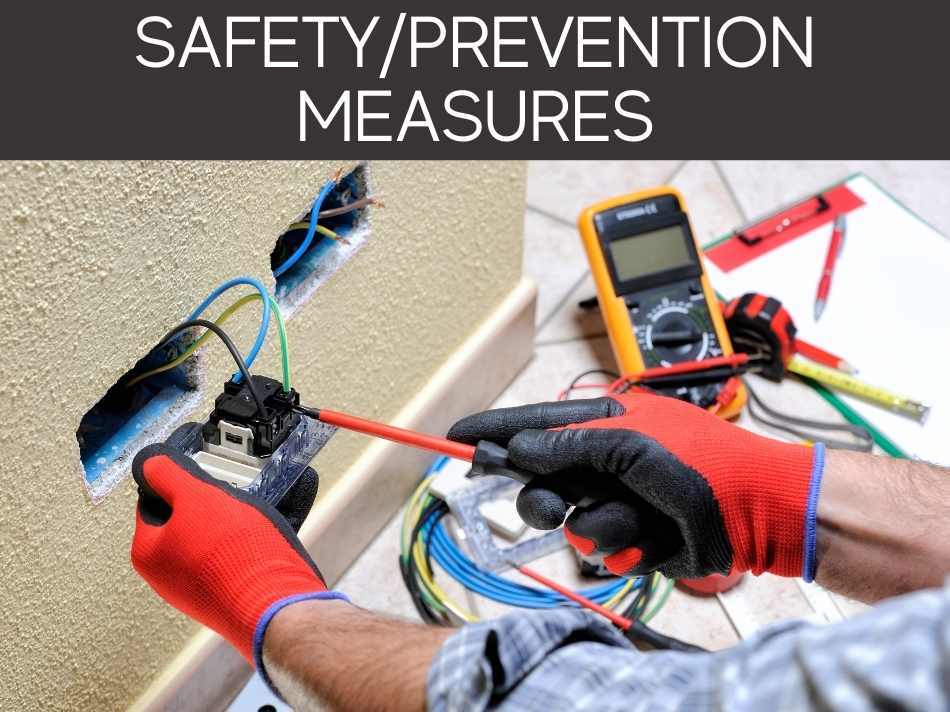
Unlike the other ordinary bulbs, LED bulbs are sophisticated and use complex LED drivers. To keep your home safe from fires;
- Have a professional and registered electrician do your home wiring and installation
- Follow the guidelines provided by the manufacturer and, more so, use compatible parts while installing the lights.
- Purchase high-quality bulbs (do not buy bulbs from eBay). You can purchase an ENERGY STAR-rated LED bulb.
- Do not enclose your light bulbs in light fixtures—to avoid overheating.
- Connect the LED bulb with a resistor in series—not in parallel
Can LED lights cause a fire?
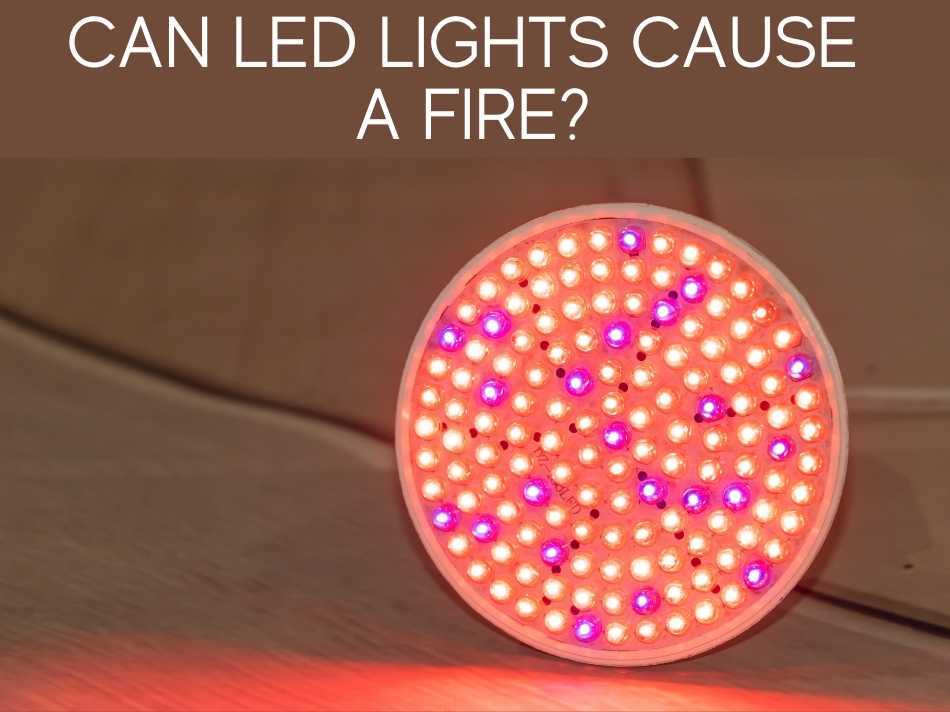
LED lights emit little heat when compared to other lights; CFLs release about 80% energy as heat, while incandescent bulbs release about 90% of their energy as heat.
That said, LED lights barely overheat, and thus they are unlikely to cause a fire. Although, any mistake when doing the installation can cause a fire.
Oh, and if you’re curious whether LED lights really work for growing plants, see our complete answer here.
In fact, some growers leave LED lights on for extended periods–sometimes 18+ hours per day.
See our complete article on how long should you leave grow lights on.
Can LED lights catch paper on fire?
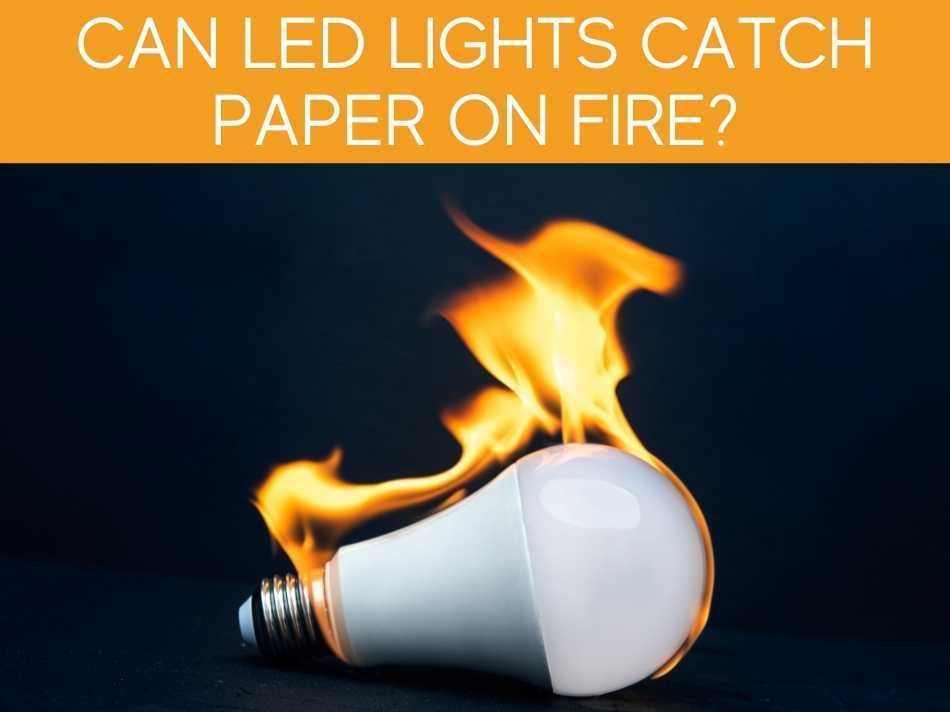
Most lights cause fire via contact. If the light gets into contact with papers, curtains, or a piece of cloth, it may cause a fire.
Unlike incandescent or fluorescent, LED lights have a thermal management system.
LED lights use heat sinks to absorb heat produced by the bulb and dispatch it to the surroundings.
Therefore, LED lights will have very little heat emitted.
Specifically, most LEDs operate around ~105-110 degrees F, whereas paper requires temperature of at least 450 degrees F. So, LEDs at normal operating temperature cannot ignite paper under normal circumstances.
Can a grow light start a fire?
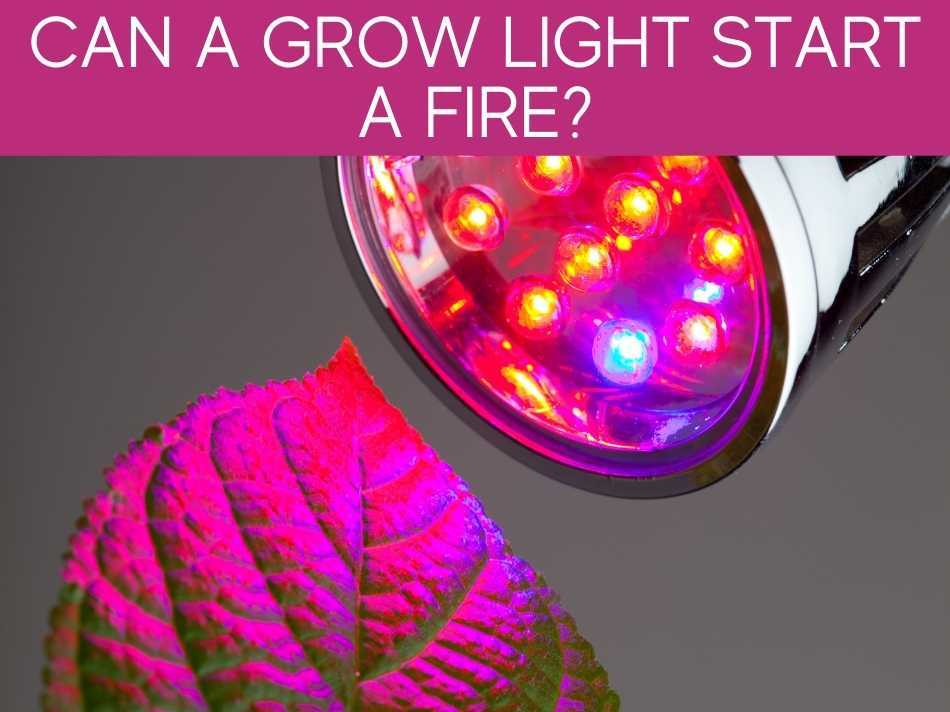
Grow lights are commonly used in greenhouses and indoor gardening, they help plants grow by substituting sunlight.
Basically, all plants need light to thrive and yield good produce through a process called photosynthesis.
Some plants may require more than 12 hours of light, while most plants require a minimum of 8 hours of light.
So, if you are practicing indoor gardening or have a greenhouse, you will need a grow light.
But, can a grow light start a fire?
Unfortunately, some types of grow lights can cause a fire in the greenhouse or an apartment, depending on the type of light and its operating temperature.
LED grow lights though, typically operate at much cooler temperatures, which makes risk of fire from the bulbs unlikely.
Grow light fire hazard
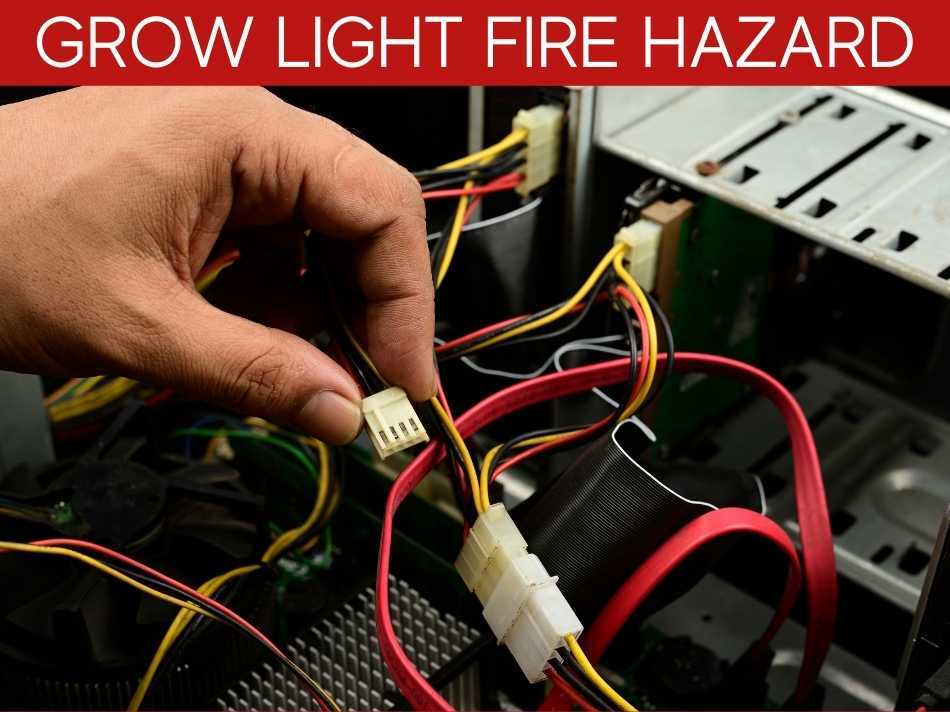
Grow lights are mainly set up in houses, buildings, greenhouses, or in close proximity to residential areas.
So, in case of a fire incident, the fire may spread quickly, causing unimaginable damages or, worst, cause several deaths and injuries.
Also, another huge mistake that leads to grow light fires is poor wiring.
Some people might not have even the most basic knowledge in wiring, but go ahead and undertake the grow light wiring.
That is a hazard in waiting since incorrect wiring leads to circuits overload which in turn causes electrical fires.
Moreover, grow lights give light to plants; plants need water as well.
So, there will be water in the greenhouse or the apartment.
Water can short circuit wiring and lead to fire, or worst wet electric appliances can electrocute.
How to prevent grow light fires
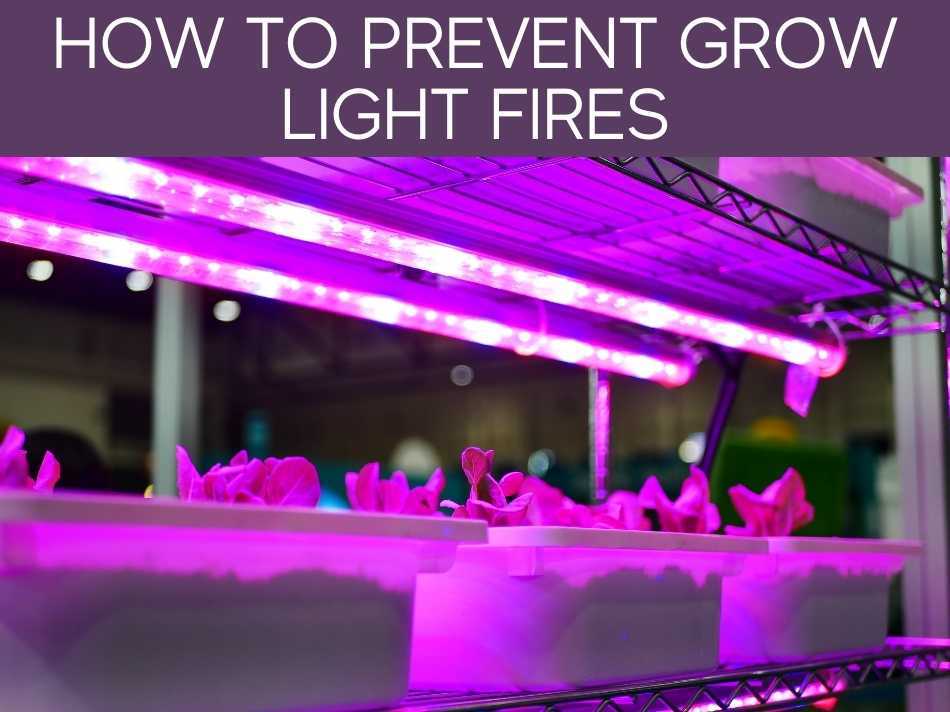
As mentioned earlier, grow lights can cause a fire.
Fortunately, you can prevent grow light fire by;
- Make sure your grow lights’ electrical wires are not exposed. Never purchase second-hand wires, instead purchase brand new wires for safety reasons.
- Do not leave your grow lights on continuously–especially high-temperature bulbs. When you leave your grow lights on for more extended periods, more heat is emitted and might cause a fire. Alternatively, use LED grow lights which can be left on for 24 hours without overheating.
- Do not expose your grow lights to water.
- Set up your grow light far from flammable objects.
- Make sure the grow lights are wired correctly (get a certified electrician to undertake the task).
LED grow light fire risk
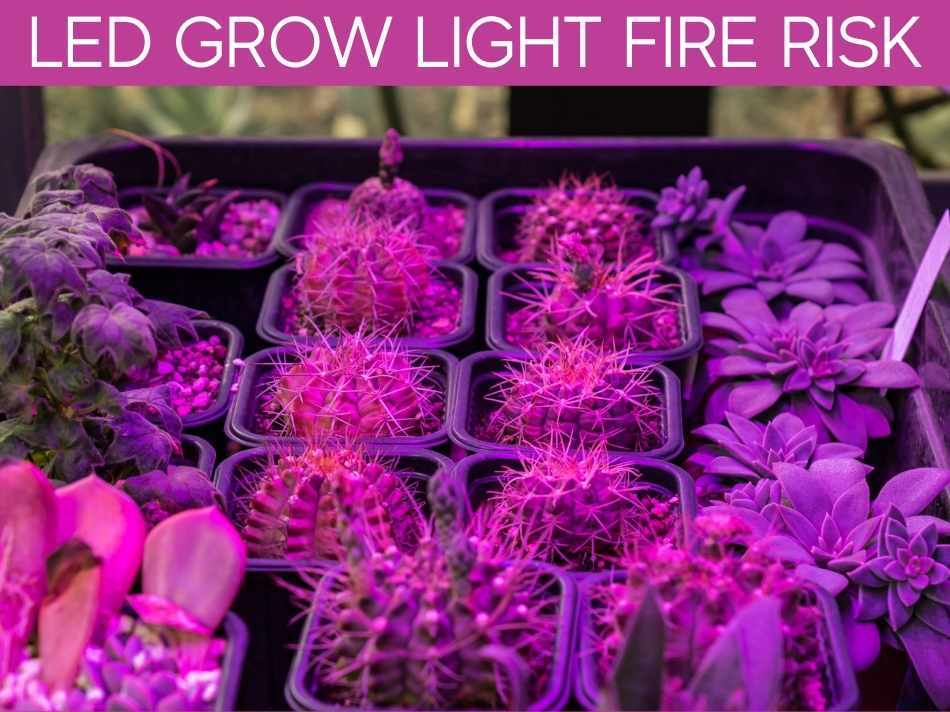
Like the LED bulbs, LED grow lights do not have more light compared to the HIP lamp.
Thus, an LED bulb emits minimal heat (it also has aluminum heat sinks to dissipate heat).
Although the LED grow lights still emit some heat, the heat is typically considered harmless to the plants.
As a matter of fact, LED grow lights can be installed in close proximity to plants or even between the plant’s canopy.
You’ll want to check out the complete article on how far away should LED lights be from plants.
So, LED grow lights have minimal fire hazards and are unlikely to cause a fire in your greenhouse.
Summing up
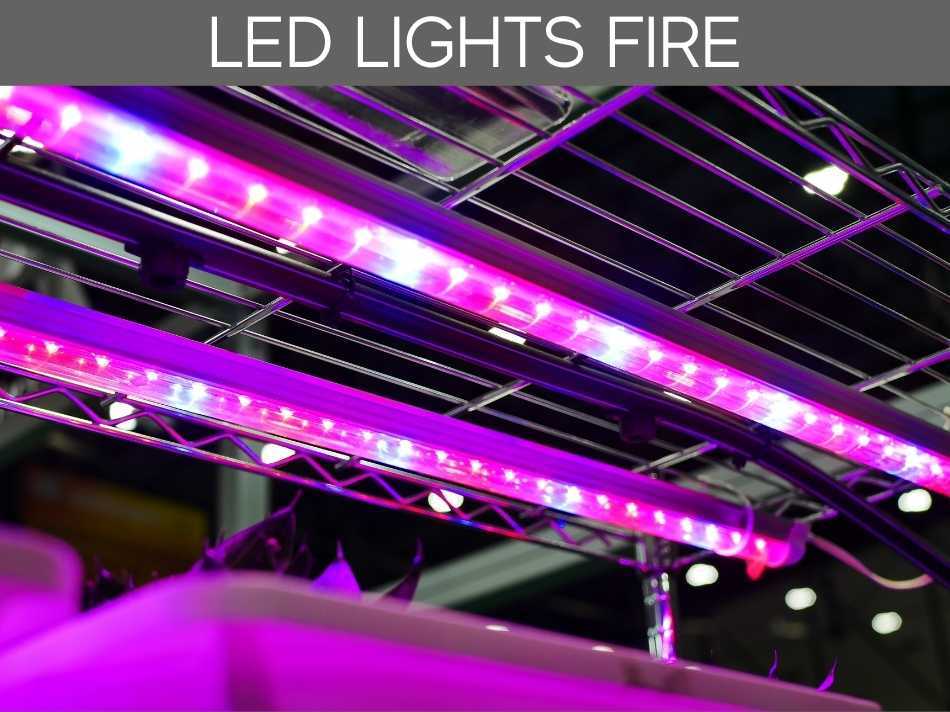
LEDs are the safest bulbs and grow lights in today’s market.
They are made with unique aluminum heat sinks; therefore, they do not overheat.
Although be on the lookout: poor installation, water contact, or incompatible & defective parts can lead to electric fires.
Also, LEDs are not made from mercury or any other hazardous substance, and are thus safer than some other lighting options, such as compact fluorescent & other bulbs which contain mercury.
